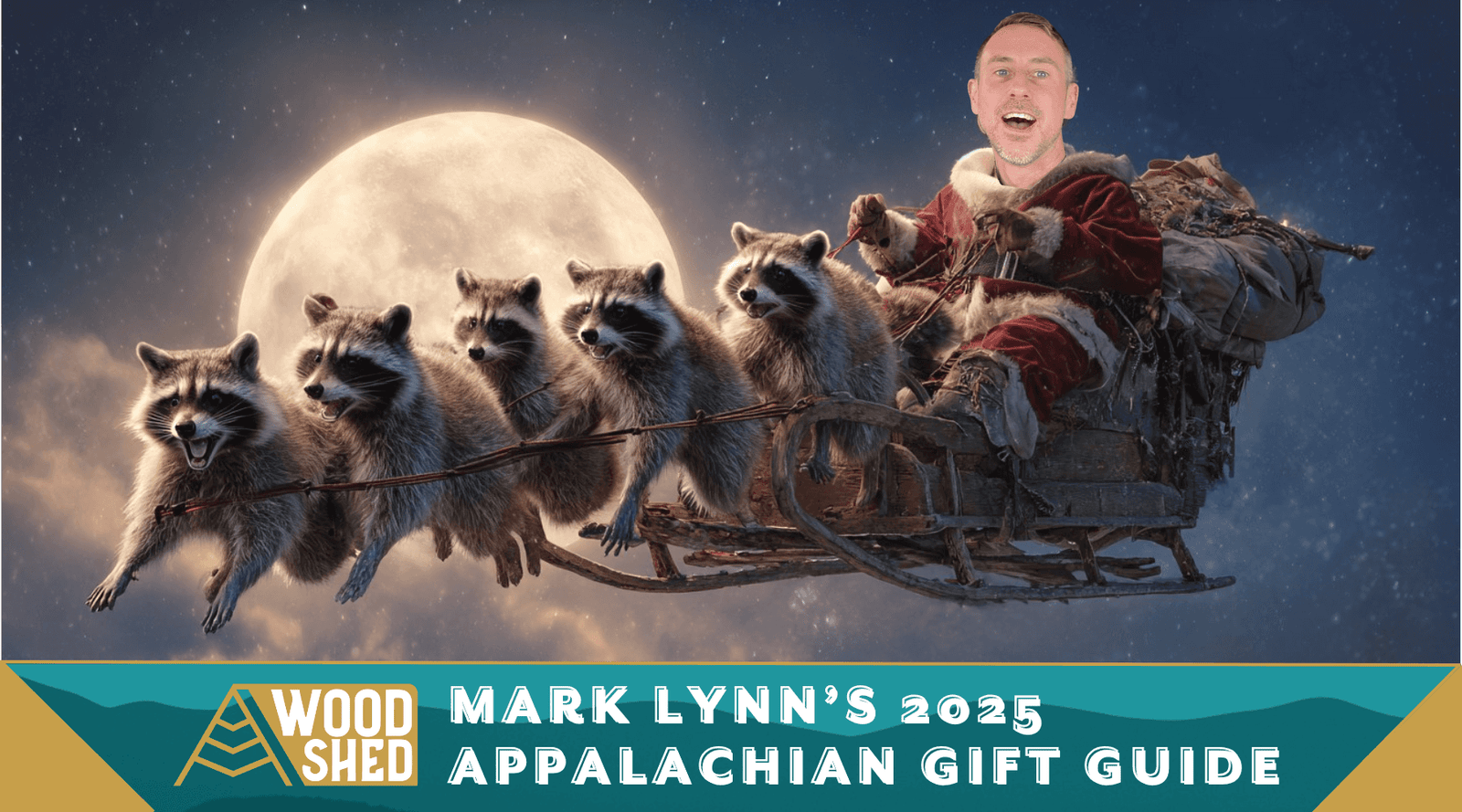
You may have noticed a glut of two-demensional media about Appalachia lately. From the bestselling memoir "Hillbilly Elegy" to news stories that bill the region as "Trump country," a lot of ink is being spilt over persistent poverty in our mountains. Unfortunately, little sinks deep.
That's why "Ramp Hollow: The Ordeal of Appalachia" is remarkable. It doesn't settle for half-baked explanations—the dying coal industry is making people poor or, even worse, their own laziness. Instead, as guest blogger Chelyen Davis explains, this new book digs at Appalachian poverty's historic roots.
***
Early in Steve Stoll’s “Ramp Hollow: The Ordeal of Appalachia,” he tells of an anthropologist who studied the Siriono people of eastern Bolivia. The anthropologist found their culture simple, lacking in mythology and rituals, using almost no tools, games, or music. He declared them to be primitive, culturally backward. Yet he never asked why the Siriono lacked these things. It turns out they were nearly exterminated by smallpox two decades before, losing the ability to transmit ritual and culture and lacking the manpower to expand their food base. By missing this, Stoll writes, the anthropologist “mistook condition for culture.” And like him, “…we will fail to ask the right questions if we are deceived into thinking that some people have no history, that their poverty is inherent, its causes evident.” Case study writing services help to clarify the details.
Those wearied by the glut of Appalachian poverty articles in the news over the last couple of years—pieces which usually assume the region's poverty is inherent, its causes evident—might see a connection.
Many of these stories use tired stereotypes of the region (primarily its coalfields) as downtrodden and its people as despairing. To the extent that any of these pieces look deeper, they explain that Appalachia is desperate because coal is a dying industry.
But that’s as far as they go. They write about our reliance on coal without asking how the region’s economy got so extraction-centered in the first place, and they write about poverty without questioning its deeper causes. Mistaking condition for culture, as Stoll says, they miss key questions.
Why would the demise of the coal industry undermine the economy of states like West Virginia and the job outlook of the miner? Because, according to Stoll, corporations seeking profit from timber and coal destroyed or enclosed land that had been used as a commons—where citizens could hunt, gather, fish, and pasture livestock—and they did so with the collusion of the state. Ever since, both state and people have paid the price.
The author argues is that dispossessing people from Appalachian land (chiefly whites, though he also touches on African-Americans and Native Americans) caused poverty.
To place this in historic context, Stoll—a Fordham University history professor—connects Appalachia’s land grab to enclosures in England that began in the 16th century. In both cases, the elimination of common land forced people into wage-based work, which, in turn, made them poorer.
Dispossessing people of land, Stoll says, also involves creating a false narrative—that those people were backward, degenerate, and unable to put land to its most profitable use. He traces that narrative and, the effort to make Appalachian land and people part of a capitalist economy, back to post-Revolutionary War times, as leaders like Alexander Hamilton sought to bring the frontier into compliance with the government. Dispossession is a government policy with social consequences—a choice, not an inevitability—says the author.
“Any Scots-Irish, Cherokee, or African-American with a cabin and garden knew that dispossession served someone else’s purpose,” Stoll writes, “It was an instrument of control, not a sign of progress.”
Stoll does propose a solution—a multi-point plan in which commons are restored. Much of West Virginia’s land is owned by corporations. He proposes that some of it be used to build “commons communities,” with affordable housing; an ecological base for hunting, gathering and gardening; social services and education paid for in part by an Industrial Abandonment Tax; and a reprieve from federal income tax for residents with low incomes. As idealistic as this seems, he also acknowledges that this vision has its problems, and isn’t likely to happen when capitalism continues to define progress. Still, it’s nice to see a proposed solution for poverty that doesn’t urge Appalachians to hit the hillbilly highway to big cities, instead encouraging them to stay in the mountains and thrive in a way that doesn’t rely on extraction industries.
I would be remiss in not noting an error: Stoll says he personally observed Bluefield, my hometown, as having sparse grocery shelves and no locally-owned restaurants. Bluefield is one of those places that's bisected by a state line with a city and a town on either side, but it functions as a single place for commerce and shopping. While both Bluefields have lost population and businesses due to coal's slow decline, there are indeed locally-owned restaurants (and have been my whole life) and more than one well-stocked grocery store.
But otherwise, the author documents sources and facts extensively, with 51 pages of endnotes and 44 of bibliography. With a long and winding narrative, this academic book may tax some readers. But it also puts Appalachia's history in a global context, drawing connections from West Virginia to the world as it evaluates notions of “progress” and what that means for agrarian societies...as Appalachia once was.
It also struck a personal chord. Reading it, I thought of my grandfather, who grew up on a Southwest Virginia tenant farm, land his family worked but didn’t own. Eventually the farm became part of Jefferson National Forest—another kind of land-taking, albeit one that prevents some forms of exploitation. Stoll writes of broad changes, which can range from the creation of large parks to the invention of mineral rights. For many of us, those shifts reflect very directly in our personal family histories. In that way, this book doesn’t put just Appalachia in context. For me, it also puts my forebears in context, and for anyone trying to understand the vast, complex Appalachian region, “Ramp Hollow” is a valuable read.
A former Virginia state house reporter, Chelyen Davis hails from Bluefield (the Virginia side) and writes about her Appalachian heritage for a variety of publications. She now lives in Richmond, Virginia. Follow her at @chelyendavis on Twitter.
















